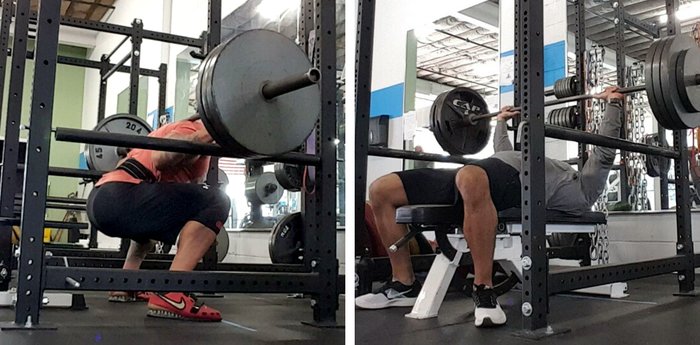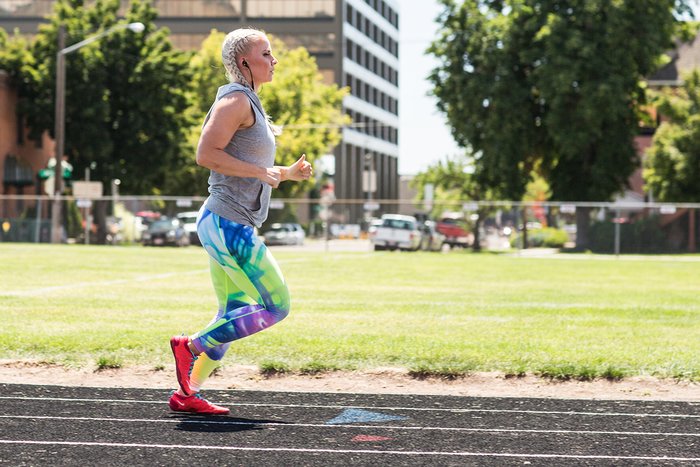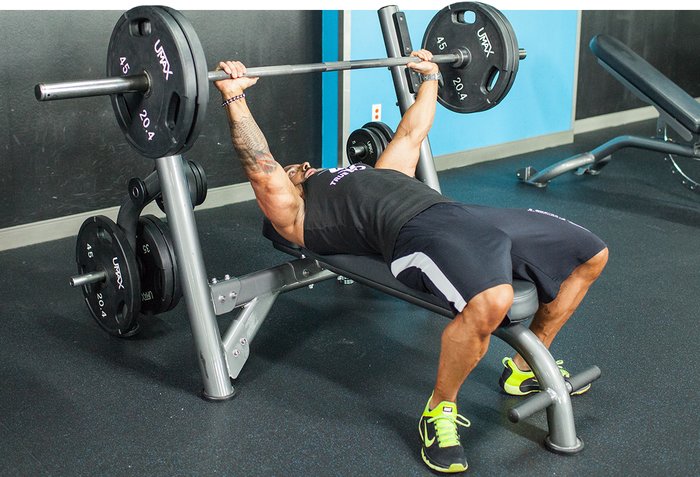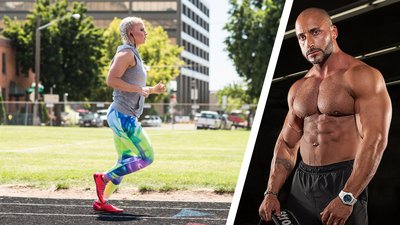When you push your body hard and break down muscle fibers, you'll occasionally wake up sore as hell a day—or two, or three—later. Despite how a lot of people act online, limping around with delayed-onset muscle soreness doesn't mean you're some kind of hero. It doesn't mean you're a wimp, either. It just means you're training.
But what about the miserable feeling itself—is there anything you can do? Actually, yes, and it's something you should be doing anyway. Learning how to speed up your recovery time will be a major asset in your arsenal to grow more muscle and push past new barriers.
Stop looking at your toilet in fear every time you have to go. Here's how you can grab the wheel of the pain train!
What Doms Is And Isn't
Before I get into how to best deal with DOMS, I want to clear some things up. Contrary to what I hear people say, DOMS is not caused by the buildup of lactic acid in the muscle. And what's more, even during exercise, what most people think is lactic acid is actually a slightly different substance, lactate—but that's a different discussion.
While the presence of lactate and hydrogen ions can contribute to the acute discomfort associated with intense exercise, it has nothing to do with the delayed pain experienced 24-48 hours post-exercise. In fact, lactate levels return to pre-exercising levels within one hour following exercise.
What makes you sore is actually the result of microtrauma to your muscles following high-intensity exercise. Heavy lifting increases the tension placed on your muscles and disrupts the small protein structures within the muscle. If you're pushing yourself out of a familiar range of motion or doing something like slow eccentrics, the damage is greater.
While this is necessary to stimulate muscle growth, it can also make the recovery process a slow and painful one.

What makes you sore is actually the result of microtrauma to your muscles following high-intensity exercise.
Active Recovery, The Secret Sauce
Remember your out-of-shape gym teacher who used to make you run a few laps for a cool-down at the end of your 18-minute hardcore PE session? Well, it turns out that guy was onto something. In fact, doing intra- and post-workout active-recovery activities is one of the best ways to increase the pace of recovery.
It's common to find athletes in other sports doing active-recovery work in the middle of a game or an event that requires extreme physical exertion. For example, you will often see track athletes running short, easy distances between sprints to facilitate blood flow and the removal of metabolic byproducts like hydrogen ions within their muscles. This intra-training recovery, however, is largely overlooked in general fitness and bodybuilding.
If DOMS is keeping you out of the gym and in your bed whining, your programming needs some work. Your split needs to include a day of active recovery. This is best done 48-72 hours after heavy training. We know that blood flow into the muscle is essential for causing maximum hypertrophy, but it is also essential for clearing metabolites out and bringing healthy oxygenated blood to the area. So, the goal of this day should be to increase the amount of blood flow to the area that was trained hard in the previous days.
On this active-recovery day, do not train heavy. Train hard enough to increase blood flow to the muscle, but no so hard you cause lots of additional damage. You are in a state of recovery, not building; do not get the two confused. On this day, more is not better!

Train hard enough to increase blood flow to the muscle, but no so hard you cause lots of additional damage.
Your Active-Recovery Plan
A good program will be laid out to include a lighter high-volume day, a heavier low-volume day, and an active recovery day a few days later. As I explained in my last article, "What's the Best Way to Train Chest," training one muscle group once per week is old-fashioned, so it's time to outgrow it.
For each muscle group, you'll perform a hypertrophy day. Then, 72 hours later, you'll perform a heavy, low-volume workout, and then 48 hours after the low-volume workout, you'll perform an active-recovery workout.
Here's what it looks like:
- Day 1: Hypertrophy. High damage, high volume, 100 reps
- Day 4: Strength. High intensity. low damage, 65 reps
- Day 6: Active recovery. Low intensity, low damage, 45 reps

Training one muscle group once per week is old-fashioned, so it's time to outgrow it.
Your active-recovery workout will include a few sets at 65 percent of your working load from your heavy day for the same prescribed reps. This 65 percent may feel just as heavy and move just as slowly as the weight you used on your heavy day, but that's just fine. You've already hit that muscle group twice in five days, so you should feel tired.
Follow these main sets with a few sets of an accessory exercise for the muscle group your working. Stay in the 15- to 20-rep range. And that's it. You're done.
Your active recovery is only going to take about 15 minutes, so it doesn't need to have its own special day. Do this quick-and-easy work in addition to the rest of the day's programming for another muscle group.
It's as simple as this: Train and recover smart. Those four words will make all the difference to your physique, your performance, and your overall health.

